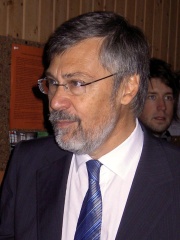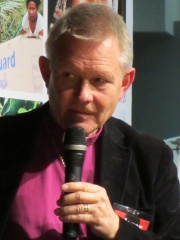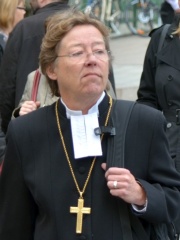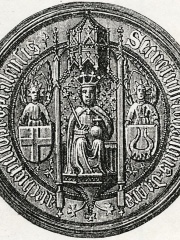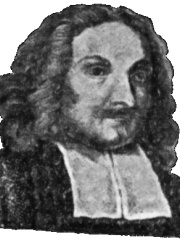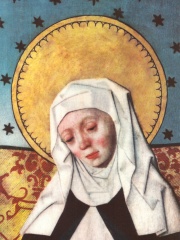
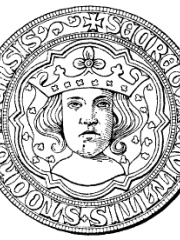
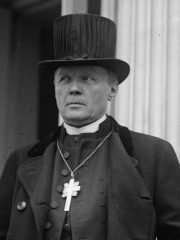

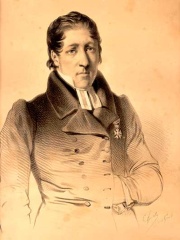
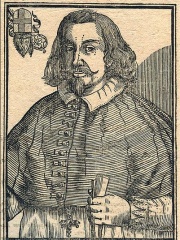
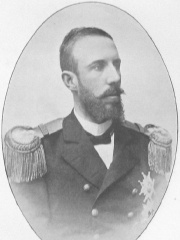
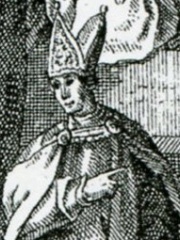
The Most Famous
RELIGIOUS FIGURES from Sweden
This page contains a list of the greatest Swedish Religious Figures. The pantheon dataset contains 3,187 Religious Figures, 15 of which were born in Sweden. This makes Sweden the birth place of the 33rd most number of Religious Figures behind Mexico, and Croatia.
Top 10
The following people are considered by Pantheon to be the top 10 most legendary Swedish Religious Figures of all time. This list of famous Swedish Religious Figures is sorted by HPI (Historical Popularity Index), a metric that aggregates information on a biography's online popularity. Visit the rankings page to view the entire list of Swedish Religious Figures.

1. Bridget of Sweden (1303 - 1373)
With an HPI of 79.37, Bridget of Sweden is the most famous Swedish Religious Figure. Her biography has been translated into 56 different languages on wikipedia.
Bridget of Sweden, OSsS (c. 1304 – 23 July 1374), also known as Birgitta Birgersdotter and Birgitta of Vadstena (Swedish: heliga Birgitta), was a Swedish Catholic mystic and the founder of the Bridgettines. Outside Sweden, she was also known as the Princess of Nericia and was the mother of Catherine of Vadstena. Bridget is one of the six patron saints of Europe, together with Benedict of Nursia, Cyril and Methodius, Catherine of Siena and Teresa Benedicta of the Cross.

2. Eric IX of Sweden (1120 - 1160)
With an HPI of 73.87, Eric IX of Sweden is the 2nd most famous Swedish Religious Figure. His biography has been translated into 43 different languages.
Saint Erik (c. 1125 – 18 May 1160), also called Eric IX or Erik Jedvardsson was King of Sweden from c. 1156 until his death in 1160. The Roman Martyrology of the Catholic Church names him as a saint memorialized on 18 May. He was the founder of the House of Erik, which ruled Sweden with interruptions from c. 1156 to 1250.

3. Nathan Söderblom (1866 - 1931)
With an HPI of 70.37, Nathan Söderblom is the 3rd most famous Swedish Religious Figure. His biography has been translated into 53 different languages.
Lars Olof Jonathan Söderblom (Swedish pronunciation: [ˈnɑ̌ːtan ˈsø̌ːdɛrblʊm]; 15 January 1866 – 12 July 1931) was a Swedish bishop. He was the Church of Sweden Archbishop of Uppsala from 1914 to 1931, and recipient of the 1930 Nobel Peace Prize. He is commemorated in the Calendar of Saints of the Lutheran Church on 12 July.

4. Olaus Magnus (1490 - 1557)
With an HPI of 70.10, Olaus Magnus is the 4th most famous Swedish Religious Figure. His biography has been translated into 33 different languages.
Olaus Magnus (born Olof Månsson; October 1490 – 1 August 1557) was a Swedish writer, cartographer, and Catholic clergyman.
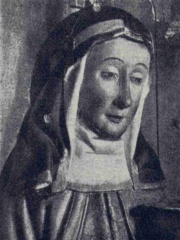
5. Catherine of Vadstena (1331 - 1381)
With an HPI of 68.97, Catherine of Vadstena is the 5th most famous Swedish Religious Figure. Her biography has been translated into 27 different languages.
Catherine of Sweden, Katarina av Vadstena, Catherine of Vadstena or Katarina Ulfsdotter (c. 1332 – 24 March 1381) was a Swedish noblewoman. She is venerated as a saint in the Roman Catholic Church. Her father was Ulf Gudmarsson, Lord of Ulvåsa, and her mother was Saint Bridget of Sweden (known as Birgitta Birgersdotter of Finsta in her lifetime).

6. Lars Levi Laestadius (1800 - 1861)
With an HPI of 65.86, Lars Levi Laestadius is the 6th most famous Swedish Religious Figure. His biography has been translated into 26 different languages.
Lars Levi Laestadius (Swedish pronunciation: [ˈlɑːʂ ˈlěːvɪ lɛˈstɑ̌ːdɪɵs]; 10 January 1800 – 21 February 1861) was a Swedish Sami writer, ecologist, mythologist, and ethnographer as well as a pastor and administrator of the Swedish state Lutheran church in Lapland who founded the Laestadian pietist revival movement to help his largely Sami congregations, who were being ravaged by alcoholism. Laestadius himself became a teetotaller (except for his ongoing use of wine in holy Communion) in the 1840s, when he began successfully talking his Sami parishioners out of alcoholism. Laestadius was also a noted botanist and an author.

7. Johannes Magnus (1488 - 1544)
With an HPI of 63.36, Johannes Magnus is the 7th most famous Swedish Religious Figure. His biography has been translated into 23 different languages.
Johannes Magnus (a modified form of Ioannes Magnus, a Latin translation of his birth name Johan Månsson; 19 March 1488 – 22 March 1544) was the last functioning Catholic Archbishop in Sweden, and also a theologian, genealogist, and historian.

8. Prince Oscar Bernadotte (1859 - 1953)
With an HPI of 63.22, Prince Oscar Bernadotte is the 8th most famous Swedish Religious Figure. His biography has been translated into 22 different languages.
Prince Oscar Carl August Bernadotte, Count of Wisborg (15 November 1859 – 4 October 1953) was a Swedish religious activist, the second son of King Oscar II of Sweden and his consort, Sofia of Nassau. Born as a Prince of Sweden and Norway, he was known as Prince Oscar, Duke of Gotland. However, by marrying contrary to Swedish constitutional requirements, he lost those titles, becoming instead Luxembourgish nobility as Prince Bernadotte and Count of Wisborg.

9. Gustav Trolle (1488 - 1535)
With an HPI of 62.95, Gustav Trolle is the 9th most famous Swedish Religious Figure. His biography has been translated into 16 different languages.
Gustav Eriksson Trolle (September 1488 – 1535) was the archbishop of Uppsala in Sweden, in two sessions, during the turbulent Reformation events. He was the son of Eric Arvidsson Trolle, a former regent of Sweden during the era of the Kalmar Union. After returning from studies abroad, in Cologne and Rome, he was in 1513 elected vicar in Linköping. One year later he became Archbishop of Uppsala. In 1515, he got into an argument with the Swedish regent Sten Sture the Younger, who spread the rumour that he was allied with the King Christian II of Denmark. True or not, it resulted in Trolle being removed from his office and put under siege in the archbishop's mansion Almarestäket at lake Mälaren. In the winter of 1517, Almarestäket was demolished by orders from the Swedish government. The Danish threat grew stronger, and Trolle was among those who spoke in favour of the Danish King. In 1520, Christian II of Denmark entered Sweden, and Trolle was rewarded by being reappointed Archbishop of Uppsala. He crowned Christian King of Sweden on 4 November, 1520. This, and subsequent events, supports the notion of the two having made a deal previous to Christian's conquest of Sweden.
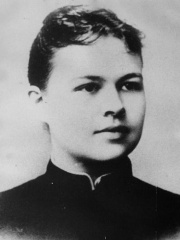
10. Elizabeth Hesselblad (1870 - 1957)
With an HPI of 62.94, Elizabeth Hesselblad is the 10th most famous Swedish Religious Figure. Her biography has been translated into 27 different languages.
Maria Elizabeth Hesselblad, OSsS (4 June 1870 – 24 April 1957), was a Swedish Catholic religious sister who founded a new, active, branch of the Bridgettines known as the Bridgettine Sisters. Hesselblad is recognised as a Righteous Among the Nations due to her efforts in World War II saving the lives of Jews during the genocide of the Holocaust. Pope John Paul II beatified her on 9 April 2000 and Pope Francis canonised her 5 June 2016 at Saint Peter's Square.
People
Pantheon has 15 people classified as Swedish religious figures born between 1120 and 1954. Of these 15, 3 (20.00%) of them are still alive today. The most famous living Swedish religious figures include Ulf Ekman, Anders Wejryd, and Eva Brunne. The most famous deceased Swedish religious figures include Bridget of Sweden, Eric IX of Sweden, and Nathan Söderblom.
Living Swedish Religious Figures
Go to all RankingsUlf Ekman
1950 - Present
HPI: 56.99
Anders Wejryd
1948 - Present
HPI: 51.55
Eva Brunne
1954 - Present
HPI: 49.43
Deceased Swedish Religious Figures
Go to all RankingsBridget of Sweden
1303 - 1373
HPI: 79.37
Eric IX of Sweden
1120 - 1160
HPI: 73.87
Nathan Söderblom
1866 - 1931
HPI: 70.37
Olaus Magnus
1490 - 1557
HPI: 70.10
Catherine of Vadstena
1331 - 1381
HPI: 68.97
Lars Levi Laestadius
1800 - 1861
HPI: 65.86
Johannes Magnus
1488 - 1544
HPI: 63.36
Prince Oscar Bernadotte
1859 - 1953
HPI: 63.22
Gustav Trolle
1488 - 1535
HPI: 62.95
Elizabeth Hesselblad
1870 - 1957
HPI: 62.94
Jöns Bengtsson Oxenstierna
1417 - 1467
HPI: 60.73
Laurentius Petri
1499 - 1573
HPI: 59.72
Overlapping Lives
Which Religious Figures were alive at the same time? This visualization shows the lifespans of the 4 most globally memorable Religious Figures since 1700.

